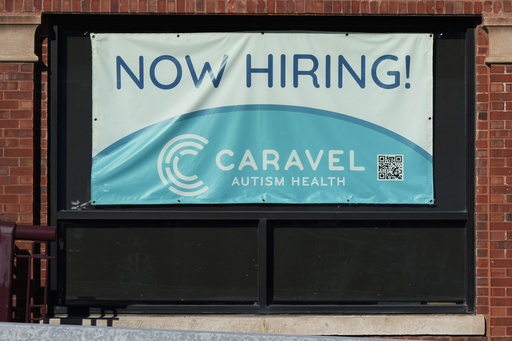Washington — As the United States enters 2025, the labor market appears to be following the pattern established in the previous year, showcasing steady but not extraordinary job growth.
According to a survey conducted by the data firm FactSet, the Labor Department is anticipated to announce that approximately 170,000 jobs were added in January. While this figure signifies a healthy performance, it marks a decline from the average monthly job additions of 186,000 for 2024, which included a notable increase of 256,000 jobs in December. The unemployment rate is predicted to remain steady at 4.1%.
The upcoming employment report will be the first for Donald Trump during his second term as president and is likely to underscore the favorable economic conditions he has inherited, characterized by job security for consumers and rising wages that encourage spending.
“The economy is kicking off 2025 in good shape,” noted Bill Adams, who serves as the chief economist at Comerica Bank.
However, the outlook for the future is less certain.
On Thursday, a federal judge intervened, temporarily blocking Trump’s initiative to reduce the federal workforce through financial incentives. Nevertheless, a federal hiring freeze that was initiated on January 20 could be detrimental to job growth, as highlighted by economist Bradley Saunders from Capital Economics. This freeze took effect after the Labor Department gathered the January job data, so its potential impacts will likely emerge in subsequent reports.
Moreover, a recent cold snap has likely resulted in increased seasonal layoffs, particularly in the Midwest and Northeast. This effect will not be reflected in the government’s employment statistics until the February report is released, according to Saunders.
Additionally, concerns loom regarding Trump’s intention to instigate a trade war. He has already enforced a 10% tariff on Chinese imports and is eyeing similar measures against Canada and Mexico, the nation’s two largest trading partners. Although he granted a 30-day delay on a proposed 25% tariff to allow for negotiations, Trump argues that these countries need to enhance their efforts to combat illegal immigration and fentanyl trafficking. Trump is also contemplating imposing tariffs on the European Union due to what he perceives as unfair treatment of U.S. exporters, especially in light of a significant trade deficit of $236 billion reported last year.
The implementation of these tariffs, typically borne by U.S. importers who often pass on costs to consumers, could potentially drive inflation back up. Though inflation has been easing since reaching a four-decade peak in mid-2022, it still hovers above the Federal Reserve’s target of 2%. If prices rise due to tariffs, the Fed may reconsider its previous plan for two interest rate cuts this year, which could hinder economic expansion and job creation efforts.
The job market has already experienced a cooling off since the intense growth observed between 2021 and 2023. Last year, American payrolls increased by 2.2 million, a decline from 3 million in 2023, 4.5 million in 2022, and a historical high of 7.2 million in 2021 as the economy rebounded from COVID-19 lockdowns. Additionally, the Labor Department has indicated that job postings are also on the decline, with numbers dropping from a peak of 12.2 million in March 2022 to 7.6 million in December, which, while still robust historically, reflects a reduction.
In this cooling labor market, employees are becoming less confident in their ability to secure better wages or job conditions through transitions. The number of resignations has decreased, falling from a record 4.5 million in April 2022 to 3.2 million in December, which is below pre-pandemic levels.
Nevertheless, layoffs remain at lower levels than those experienced before the pandemic, leading to a paradoxical situation: current employees likely enjoy job stability, while job seekers are facing increased challenges.
On Friday, the Labor Department is also expected to provide annual revisions to previously released data, revealing that job creation from April 2023 through March 2024 may have been less vigorous than initially estimated. An early revision disclosed in August indicated a reduction of 818,000 jobs over that period, which adjusted the average monthly hiring rate from 242,000 to 174,000. As these revisions are now finalized, they will become part of the historical employment statistics.




